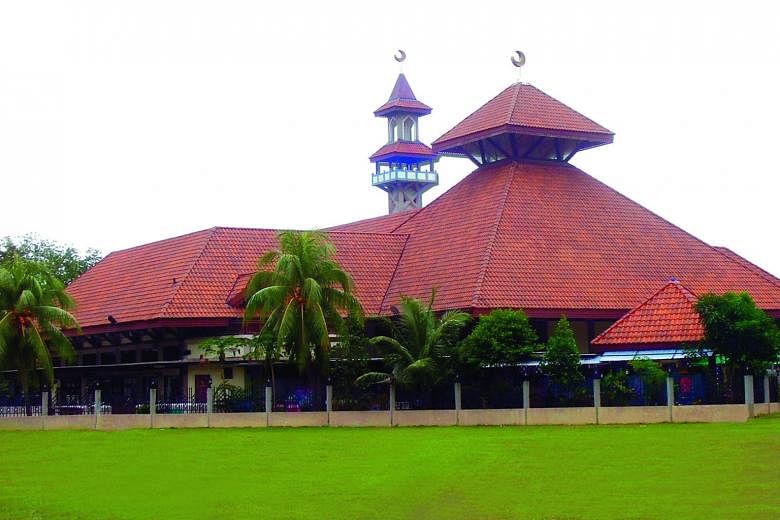The Darul Aman mosque in Eunos, with its pitched roofs - reminiscent of the rooftops of South-east Asian kampung houses - sits next to a field near Eunos MRT station.
Many walk past it daily, but few may remember that the mosque won an award from the Singapore Institute of Architects in 1987 for its unique architectural design, which also features geometric patterns associated with Islamic art.
These details and the story of the 29-year-old Masjid Darul Aman were pieced together by fresh graduate Cassandra Joseph, 22, who conducted interviews with its executive chairman and referenced archival materials.
She was part of a class of students from the School of Art, Design and Media at Nanyang Technological University assigned to document 50 religious institutions here last year. The result is a book - Faith In Architecture - that was launched last week.
Like the mosque, other religious groups have chronicled their own beginnings and architectural styles to different extents. But much of this information has remained in private hands.
The lecturer in charge, Dr Gul Inanc, believes the book helps to plug an existing gap on religious architecture literature. "There is still a great need for scholarship on religious architectural history," she said.
Other structures in the book include the Burmese Buddhist temple in Balestier; the St Thomas Orthodox Syrian Cathedral in Yio Chu Kang Road; and the Holy Tree Sri Balasubramaniar Temple in Yishun.
There are a total of about 1,000 religious buildings here.
The cathedral in Yio Chu Kang Road, for instance, can trace its roots to Kerala, India, whose priests and deacons came to Singapore in 1928 to plant a new parish. Worship started at the Armenian Church in Hill Street, but when membership increased, it sought its own premises.
In the case of the temple in Yishun, the "progressively smaller levels of pavilions" of its pyramid-shaped tower provide an illusion of height to passers-by.
It features South Indian Dravidian architecture influences.
Undergraduate Paul Tan, 25, who wrote about the Church of Singapore in Marine Parade and the Singapore Jain Religious Society in Jalan Yasin, said he believes the book will give readers an insight into the multitude of religions and faiths practised here.
Ms Joseph, who also researched the Mangala Vihara Buddhist temple in Eunos, said the experience of piecing together the stories of these places of worship has given her a greater appreciation and "depth of knowledge" on Singapore's religious heritage.
"These places are right there waiting for us to step out and explore," she said.


